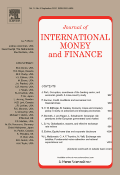
JOURNAL OF INTERNATIONAL MONEY AND FINANCE
Scope & Guideline
Exploring the forefront of monetary economics.
Introduction
Aims and Scopes
- International Monetary Policy and Exchange Rates:
The journal extensively covers the dynamics of international monetary policy, exchange rate mechanisms, and their implications for global finance, emphasizing the interconnectedness of economies. - Financial Markets and Instruments:
Research on various financial instruments, including bonds, equities, and derivatives, is prevalent, focusing on their behavior under different economic conditions and regulatory frameworks. - Capital Flows and Global Financial Stability:
The journal addresses capital flows, their determinants, and their impact on financial stability, particularly in emerging markets, exploring both the risks and opportunities they present. - Macroeconomic Policy and Economic Growth:
A significant focus is placed on the relationship between macroeconomic policies (fiscal and monetary) and economic growth, analyzing how different approaches can lead to varying outcomes across countries. - Financial Crises and Contagion:
The journal frequently publishes studies on the causes and consequences of financial crises, including the mechanisms of contagion and systemic risk in the global financial system. - Behavioral Finance and Market Sentiment:
Emerging themes include the exploration of behavioral finance aspects, such as the impact of investor sentiment on market dynamics and financial decision-making.
Trending and Emerging
- Impact of COVID-19 on Financial Systems:
Recent papers increasingly explore the effects of the COVID-19 pandemic on global financial systems, including shifts in monetary policy, changes in capital flows, and the resilience of financial institutions. - Environmental, Social, and Governance (ESG) Factors:
There is a growing emphasis on ESG considerations, with research examining how these factors influence investment decisions, financial performance, and corporate governance. - Fintech and Digital Currencies:
The rise of fintech and digital currencies is a significant area of focus, reflecting the transformative impact of technology on financial systems, including the implications for monetary policy and financial regulation. - Geopolitical Risks and Economic Outcomes:
Emerging research addresses the interplay between geopolitical tensions and economic outcomes, particularly how such risks influence capital flows and investment strategies. - Behavioral Economics in Finance:
There is an increasing interest in behavioral economics and its implications for financial markets, exploring how psychological factors affect investor behavior and market dynamics.
Declining or Waning
- Traditional Currency Models:
Research centered on traditional currency models and fixed exchange rate systems has seen a decline, as the focus shifts towards more dynamic and flexible exchange rate mechanisms. - Static Risk Assessment Models:
There has been a noticeable decrease in studies utilizing static models for assessing financial risk, with a preference for more dynamic, adaptive models that account for changing market conditions. - Single-Economy Analyses:
Papers focusing exclusively on single-economy analyses are becoming less frequent, as researchers increasingly adopt a comparative or cross-country approach to highlight global interconnectedness. - Over-reliance on Historical Data:
There is a declining trend in the use of purely historical data analyses; newer studies are incorporating more real-time data and machine learning techniques to enhance predictive accuracy. - Isolated Monetary Policy Discussions:
Discussions that treat monetary policy in isolation without considering global interdependencies are becoming less common as the journal emphasizes the importance of integrated policy frameworks.
Similar Journals
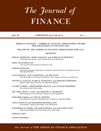
JOURNAL OF FINANCE
Connecting theory to practice in the world of finance.JOURNAL OF FINANCE, published by Wiley, stands as a premier academic journal in the fields of finance, economics, and accounting. With a history dating back to 1946, the journal has consistently delivered impactful research that shapes financial theory and practice, boasting an impressive impact factor reflective of its high citation rate. Its Quartile 1 ranking in Accounting, Economics and Econometrics, and Finance illustrates its leading position within these disciplines. Although not an open access publication, the journal continues to be indispensable for researchers, professionals, and students seeking to advance their understanding and knowledge through rigorous empirical analysis and comprehensive reviews. With an esteemed global readership, the JOURNAL OF FINANCE remains committed to fostering the dissemination of innovative financial research well into 2024 and beyond.

Annals of Economics and Finance
Cultivating Scholarly Excellence in Economics and Finance.Annals of Economics and Finance is an esteemed academic journal published by Wuhan University Journals Press, focusing on the fields of Economics and Finance. Established in 2000, this journal serves as a platform for scholars to disseminate their research findings and insights, contributing to the development of these disciplines through rigorous peer-reviewed articles. Despite currently holding a Q4 ranking in both Economics and Econometrics and Finance categories (2023), it strives to enhance its impact on the academic community and policy-making audiences. While not Open Access, the journal seeks to cultivate a deeper understanding of vital economic theories and financial practices, thereby offering invaluable resources for researchers, professionals, and students alike. With its broad scope, the Annals of Economics and Finance is poised to play a crucial role in shaping contemporary economic discourse up to 2024 and beyond.

EKONOMICKY CASOPIS
Advancing Knowledge, Shaping Economic FuturesEKONOMICKY CASOPIS is a distinguished journal published by the Institute of Economics Research SAS and the Institute of Forecasting CSPS SAS, offering a comprehensive platform for the dissemination of innovative research in the field of economics and econometrics. Since its inception in 1978, the journal has been committed to fostering scholarly discourse, showcasing empirical studies, theoretical advancements, and policy analyses that contribute to the understanding of economic phenomena. Although categorized in the Q4 quartile in 2023 and ranking in the lower percentiles within Scopus, EKONOMICKY CASOPIS remains a critical resource for researchers and practitioners seeking to engage with the economic challenges of our time. As the journal continues to evolve through 2024, it invites contributions that align with its objectives of enhancing economic insights and promoting academic discussion in Slovakia and beyond. For researchers looking to publish their work or expand their knowledge, EKONOMICKY CASOPIS serves as a vital resource in the expanding landscape of economic research.

International Journal of Financial Studies
Championing accessible research in the world of finance.The International Journal of Financial Studies is a premier publication dedicated to advancing the field of finance through open-access research. Published by MDPI based in Switzerland, this journal offers researchers, professionals, and students a platform to disseminate their findings in an accessible format since its establishment in 2013. With its ISSN of 2227-7072 and a commendable impact reflected in its Q2 ranking in finance, it occupies an influential position among finance-related journals, as evidenced by its 65th percentile rank in Scopus. The journal encompasses a wide array of topics in finance, making it essential reading for those seeking to stay abreast of current research trends and methodologies. As an open-access journal, all articles are freely available, significantly enhancing the visibility and reach of published studies, which is crucial for fostering collaboration and innovation within the global financial community. Published continuously until 2024, the International Journal of Financial Studies is not just a source of knowledge; it is a critical contributor to the progression of financial scholarship.
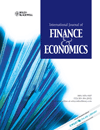
INTERNATIONAL JOURNAL OF FINANCE & ECONOMICS
Exploring the Frontiers of Economic ResearchInternational Journal of Finance & Economics, published by Wiley, is a premier academic journal that serves as a vital resource for researchers and professionals in the fields of finance, accounting, and economics. With an impressive impact factor and a reputation for excellence, the journal is recognized in the 2023 Scopus rankings, placing in the top quartiles across multiple categories, including Q2 in Accounting, Economics, and Finance. The journal has been a significant contributor to academic discourse since its inception in 1996, with its converged years extending to 2024, thereby ensuring the continuous advancement of knowledge in these critical areas. Although it operates under a traditional subscription model, its comprehensive articles provide insightful analyses, empirical research, and theoretical advancements that cater to a diverse audience—from seasoned scholars to emerging students in the field.

International Journal of Central Banking
Unveiling the Complexities of Monetary GovernanceInternational Journal of Central Banking is a premier academic journal dedicated to advancing the knowledge of central banking and its critical role in the global economy. Published by ASSOC INTERNATIONAL JOURNAL CENTRAL BANKING in Germany, this journal offers a platform for researchers, professionals, and students to explore innovative ideas and findings in the fields of economics, finance, and econometrics. With an impressive Q1 ranking in both Economics and Finance for 2023, the journal is widely recognized for its contribution to the discipline, providing insightful articles that address the complex challenges and dynamics faced by central banks today. Despite being a non-open access journal, it maintains a high impact within its scholarly community, encouraging rigorous peer-reviewed research and discourse. The journal's ongoing commitment to excellence ensures it remains a critical resource for those seeking to enhance their understanding of central banking and its implications for economic policy.
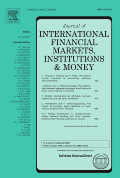
Journal of International Financial Markets Institutions & Money
Exploring the Nexus of Finance and InstitutionsThe Journal of International Financial Markets, Institutions & Money, published by Elsevier, serves as a leading platform for the dissemination of high-quality research in the fields of finance, economics, and econometrics. With an impressive impact factor reflected in its status as a Q1 journal in both categories for 2023, it ranks among the top journals, positioned at #47 out of 317 in Finance and #111 out of 716 in Economics. This journal offers a unique focus on the interplay between financial markets and institutions on a global scale, making it an essential resource for scholars, practitioners, and students alike. The journal welcomes innovative theoretical, empirical, and applied research, contributing to an exciting dialogue that shapes the future of international finance. For researchers looking to publish their findings, this journal is committed to rigorously engaging with contemporary financial phenomena, positioning itself as a vital cornerstone of academic and professional discourse.
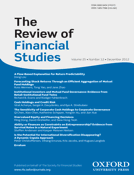
REVIEW OF FINANCIAL STUDIES
Elevating Financial Studies to New HeightsREVIEW OF FINANCIAL STUDIES, published by Oxford University Press Inc, stands as a premier academic journal in the realms of accounting, economics, and finance. With an impressive Impact Factor that reflects its high citation rates and broad influence, this journal, with an ISSN of 0893-9454 and E-ISSN 1465-7368, is considered a cornerstone for researchers, academics, and professionals seeking to contribute to and stay updated on groundbreaking developments in financial studies. Since its inception in 1996, it has established a robust reputation, consistently ranking in the Q1 category across multiple disciplines, highlighting its elite status in the global academic landscape. The Scopus rankings further reinforce its importance, positioning it at the forefront of business, economics, and finance research. While the journal is not open access, it offers vital insights and comprehensive studies that foster a deeper understanding of contemporary financial issues and methodologies. Located in the United Kingdom, the REVIEW OF FINANCIAL STUDIES is an essential resource for those aiming to advance their knowledge and research in this dynamic field.

Journal of Central Banking Theory and Practice
Fostering Research Excellence in Financial StabilityThe Journal of Central Banking Theory and Practice, published by SCIENDO, is a leading open-access journal that has been providing valuable insights into the realms of central banking, monetary policy, and financial stability since its inception in 2012. With its ISSN 1800-9581 and E-ISSN 2336-9205, this journal emphasizes rigorous scholarly research, catering to a wide audience of economists, finance professionals, and academic researchers. Based in Germany, the journal has established a strong reputation, evident from its improved category quartiles - moving from Q3 in Economics, Econometrics, and Finance to a commendable Q2 in 2023. With an impressive Scopus rank of #83/288 in General Economics and a 71st percentile ranking, it stands as a pivotal resource for understanding current trends and practices in central banking. Authors are encouraged to submit high-quality, original research that fosters knowledge and advances the field. This journal not only disseminates significant findings but also promotes discussions that are critical for policymakers and stakeholders in the financial sector.
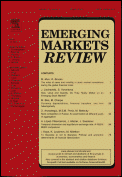
Emerging Markets Review
Advancing Knowledge in Dynamic MarketsEmerging Markets Review, published by Elsevier, stands as a leading platform for scholarly discourse in the fields of Business, International Management, and Economics. With a strong focus on the dynamic and evolving landscapes of emerging markets, this journal boasts an impressive impact factor, reflecting its high-quality research and significant contribution to the academic community. Covering a wide array of topics pertinent to emerging economies, the journal is dedicated to disseminating cutting-edge research findings, theoretical advancements, and practical insights that are essential for both researchers and industry professionals. Operating since 2000, and with its converged years extending to 2024, Emerging Markets Review has secured a Q1 category ranking in both its primary domains (Business and International Management; Economics and Econometrics), underscoring its critical role in shaping knowledge and practices in these fields. The journal's esteemed reputation is further highlighted by its strong Scopus rankings, placing it among the top percentile for relevant subject areas. Although it is not an Open Access journal, it remains accessible through institutional subscriptions, ensuring that the wealth of knowledge contained within its pages reaches a broad audience.